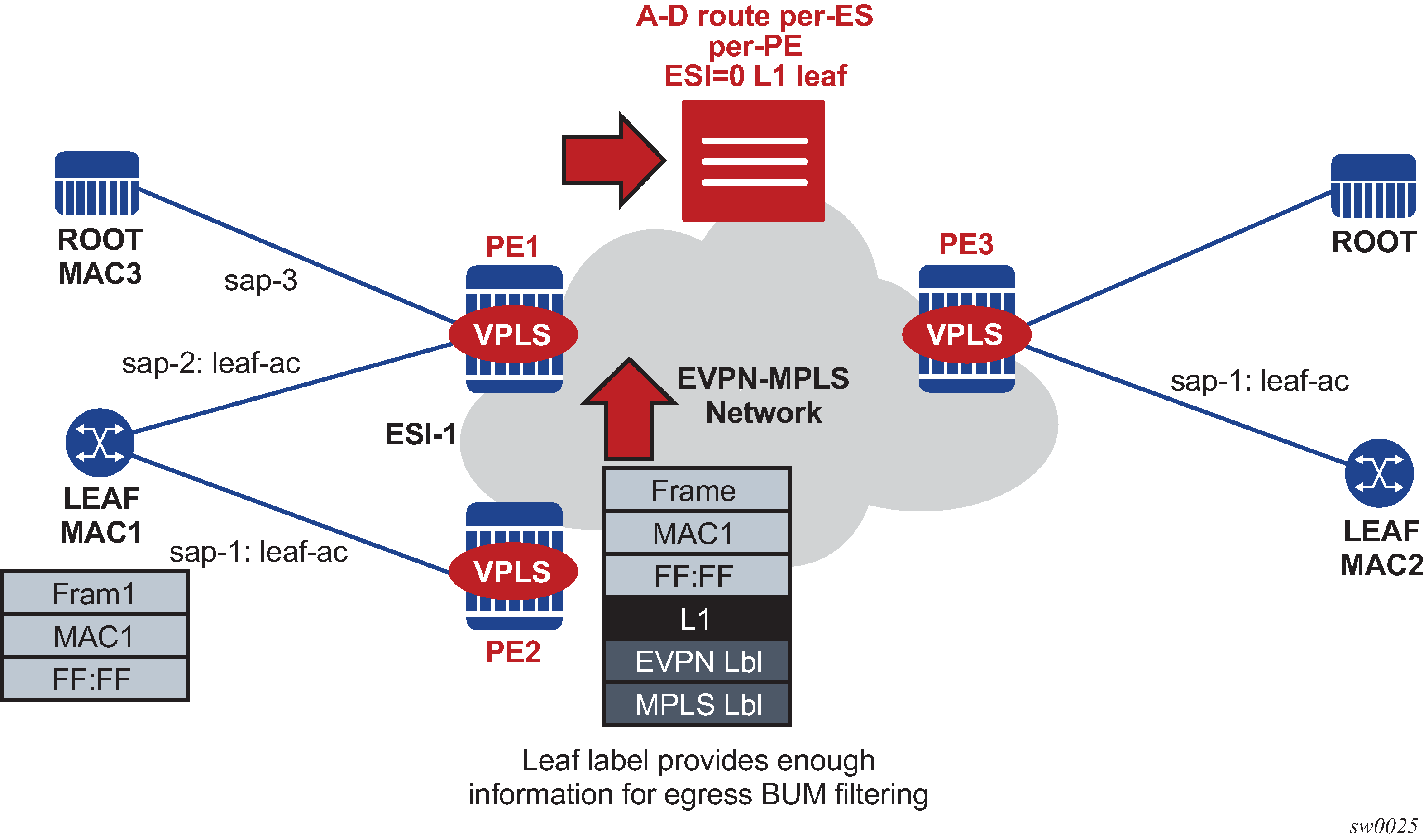EVPN E-Tree procedures support all-active and single-active EVPN multihoming. Ingress filtering can handle MACs learned on ES leaf-ac SAP or SDP bindings. If a MAC associated with an ES leaf-ac is advertised with a different E-Tree indication or if the AD per-EVI routes have inconsistent leaf indications, then the remote PEs performing the aliasing treat the MAC as root.
Figure: EVPN E-Tree BUM egress filtering and multihoming shows the expected behavior for multihoming and egress BUM filtering.

Multihoming and egress BUM filtering in Figure: EVPN E-Tree BUM egress filtering and multihoming is handled as follows:
BUM frames received on an ES leaf-ac are flooded to the EVPN based on EVPN E-Tree procedures. The leaf ESI label is sent when flooding to other PEs in the same ES, and additional labels are not added to the stack.
When flooding in the default multicast list, the egress PE skips all the leaf-acs (including the ES leaf-acs) on the assumption that all ACs in a specific ES for a specified EVI have a consistent E-Tree configuration, and they send an AD per-EVI route with a consistent E-Tree indication.
BUM frames received on an ES root-ac are flooded to the EVPN based on regular EVPN procedures. The regular ES label is sent for split-horizon when packets are sent to the DF or NDF PEs in the same ES. When flooding in the default multicast list, the egress PE skips the ES SAPs based on the ES label lookup.
If the PE receives an ES MAC from a peer that shares the ES and decides to install it against the local ES SAP that is oper-up, it checks the E-Tree configuration (root or leaf) of the local ES SAP against the received MAC route. The MAC route is processed as follows:
If the E-Tree configuration does not match, then the MAC is not installed against any destination until the misconfiguration is resolved.
If the SAP is oper-down, the MAC is installed against the EVPN destination to the peer.